Platy Fish Eat Algae But There’s More You Should Know
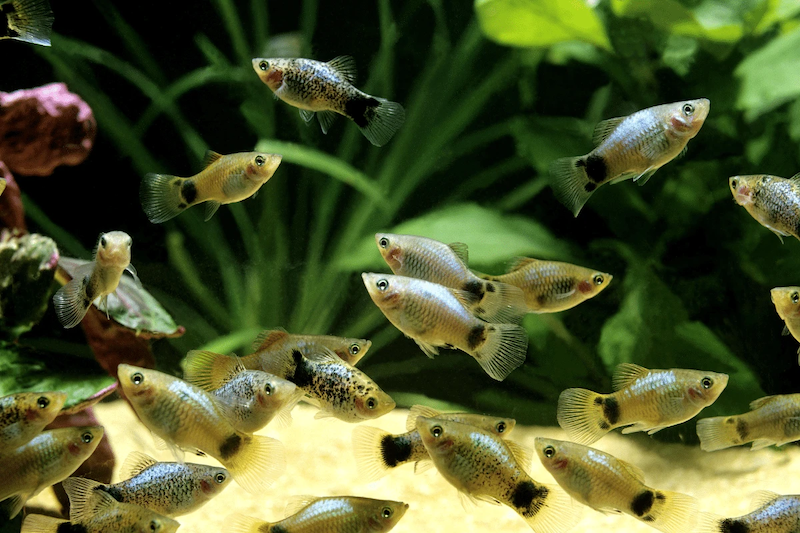
Platy fish indeed consume algae, a behavior integral to the balance of a thriving aquarium ecosystem. Understanding their dietary habits not only ensures their health but also helps you find the best ways to care for them.
You can scroll down to explore the types of algae that benefit platies. Additionally, you can identify harmful algae species to avoid and find practical tips on both platy fish care and aquarium maintenance.
1. The Truth About Algae Consumption of Platy Fish
“Do Platys eat algae?”
Yes. Platies do eat algae.
As omnivores, platies naturally consume algae in their natural habitats. In an aquarium setting, algae can serve as a supplementary food source for them. However, algae are not the primary diet for them in a tank. There are specific benefits and drawbacks to consider when your platies eat algae:
Benefits of algae consumption:
Eating algae offers several benefits for platies, including:
- Natural behavior: Eating algae allows platies to engage in natural foraging behavior, which can be beneficial for their overall well-being.
- Supplementary nutrition: Algae provide additional nutrients, including some vitamins and minerals that may not be present in standard fish food.
- Tank cleanliness: By consuming algae, platy fish help control algae growth, contributing to a cleaner tank environment.
Drawbacks of algae consumption:
- Insufficient nutrition: Relying solely on algae does not provide a balanced diet. platy fish require a variety of foods to meet their nutritional needs.
- Potential health issues: Ingesting excessive amounts of algae can lead to digestive problems for platies, as algae alone do not offer a complete nutritional profile
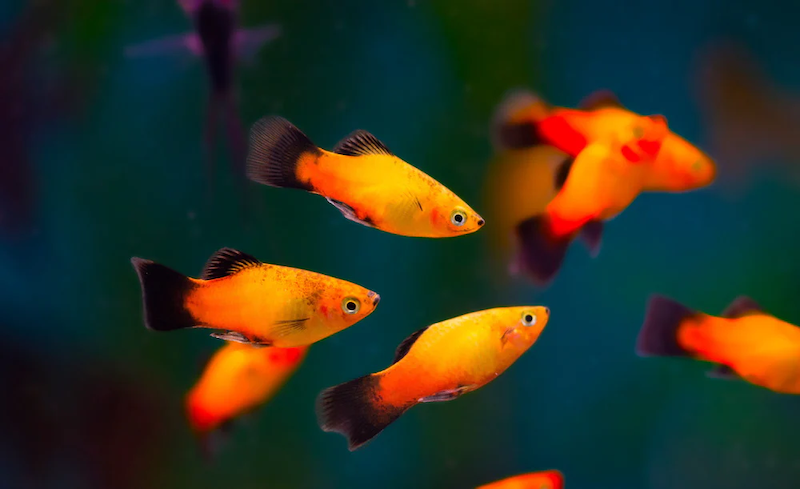
2. 3 Types of Algae Platy Fish Enjoy
Platies consume various types of algae, each offering unique benefits and nutrients. Here are the specific algae types they prefer:
2.1 Green Algae
Green algae are a favorite for platies. They particularly enjoy green hair algae and blanket algae. These algae types are rich in nutrients and provide a good source of vitamins and minerals.
2.2 Hair Algae
Platies prefer soft, green hair algae over the tougher black beard algae. Green hair algae are easier for them to consume and digest, providing a valuable food source in the tank.
2.3 Staghorn Algae
While not a primary food source, platies may occasionally graze on staghorn algae. This type of algae is less common and not as nutritionally beneficial as green or hair algae.
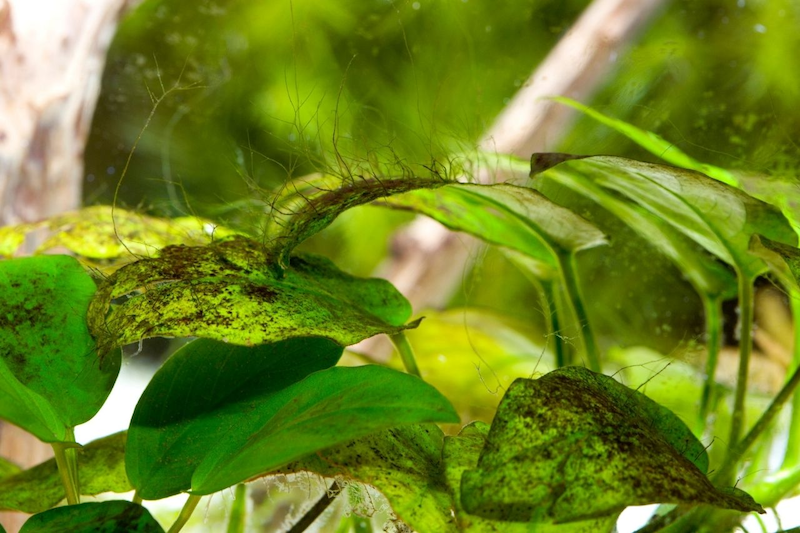
3. 3 Types of Algae Harmful to Platy Fish
Certain types of algae can be harmful to platies. Understanding these harmful algae and knowing how to prevent and remove them is essential for maintaining a healthy aquarium.
3.1 Blue-Green Algae (Cyanobacteria)
Blue-green algae, also known as cyanobacteria, are not true algae but bacteria that can produce toxins harmful to fish. Cyanobacteria deplete oxygen levels in the tank, which stresses or suffocates the fish. They also create an unsightly and smelly layer on tank surfaces.
Prevention and removal:
To prevent and remove blue-green algae, you should keep the water clean by performing regular water changes and ensuring the aquarium has adequate filtration to remove waste and toxins.
At the same time, you need to scrape off visible blue-green algae from tank surfaces and decorations. In addition, you also need to reduce excess nutrients by avoiding overfeeding and removing uneaten food.
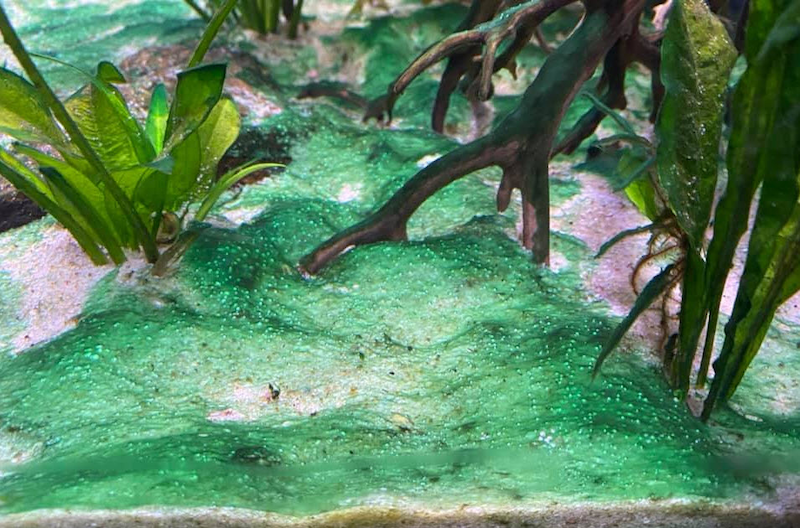
3.2 Brown Algae (Diatoms)
Diatoms are a type of algae that can coat the surfaces of the tank with a brown, dusty appearance. While not highly toxic, they can be problematic if not managed.
While they are not highly toxic, they can be problematic if not managed. Diatoms can create an unattractive appearance in the tank and may contribute to poor water quality if left unchecked.
Prevention and removal:
To prevent and remove diatoms, you can reduce light exposure to limit their growth, use water sources low in silicates and apply phosphate removers. By the way, you need to regularly clean tank surfaces to remove diatoms and maintain a healthy environment for your fish.

3.3 Dino Algae
Dino Algae can be particularly harmful due to their ability to produce toxins and their rapid growth.
Dino algae can be particularly harmful due to their ability to produce toxins and their rapid growth. They produce toxins that can be harmful to fish and other tank inhabitants, causing cloudy water and smothering corals or plants.
Prevention and removal:
To prevent and remove dino algae, you need to limit nutrients in the water to prevent dinoflagellate blooms. At the same time, you also need to enhance water movement to discourage dinoflagellate settlement, and use UV sterilizers to kill free-floating dinoflagellates.
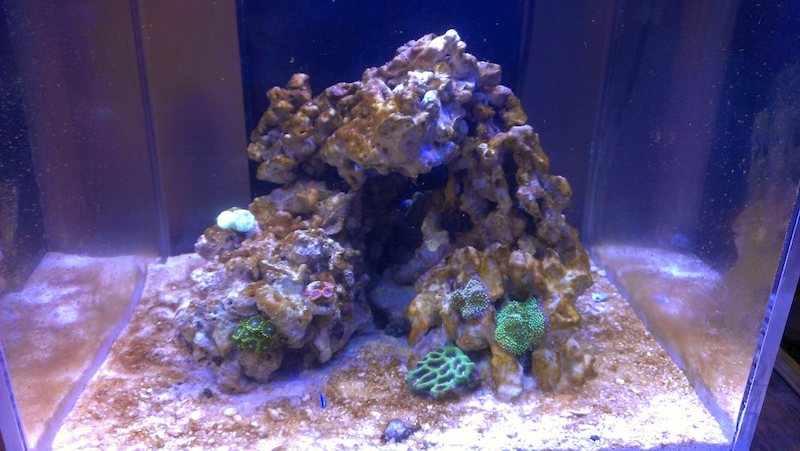
By identifying and managing these harmful types of algae, you can maintain a healthier and safer environment for your platies. Regular tank maintenance, proper filtration, and balanced nutrient levels are key to preventing harmful algae growth.
4. 5 Tips for Caring for Platy Fish and Cleaning the Tank
When caring for platies and maintaining your aquarium, you can consider the following tips to ensure their health and well-being:
1 – Avoid solely depending on algae
Platies should not depend solely on algae as their food source. While they can survive on algae for up to two weeks if they are healthy from the beginning, they thrive with a varied diet that includes other foods.
2 – Consider tankmates and algae consumption
You should introduce algae-eating tank mates like snails or shrimp that can reduce the amount of algae available for platies to consume.

3 – Perform regular water changes
You can begin with a regular routine of changing 25% of the water every two weeks. If this regimen keeps nitrate levels low, you can maintain it or consider reducing the amount slightly. If nitrate levels persistently rise, you should increase the water change to 30% or opt for more frequent changes, such as weekly.
4 – Monitor and manage algae levels
The amount of algae that is acceptable in your tank can vary based on personal preference and the type of setup you have. If algae growth becomes excessive and starts to affect water clarity, hinder plant growth, or compete with other tank inhabitants, it may be time to consider reducing algae through manual removal or adjusting light and nutrient levels in the tank.
5 – Enhance tank aesthetics
Some types of algae can enhance the natural look of your aquarium and serve as a natural filtration system. Instead of completely removing algae, maintain a moderate amount for aesthetic and ecological benefits.
Aquarists should understand the role of algae in platy fish diets and manage its presence in their aquariums for a healthy environment. Platies can eat algae,however it shouldn’t be their only food source.
By diversifying their diet and maintaining regular tank care, including water changes and algae monitoring, hobbyists can ensure their fish thrive and their aquarium ecosystem remains balanced and attractive.



